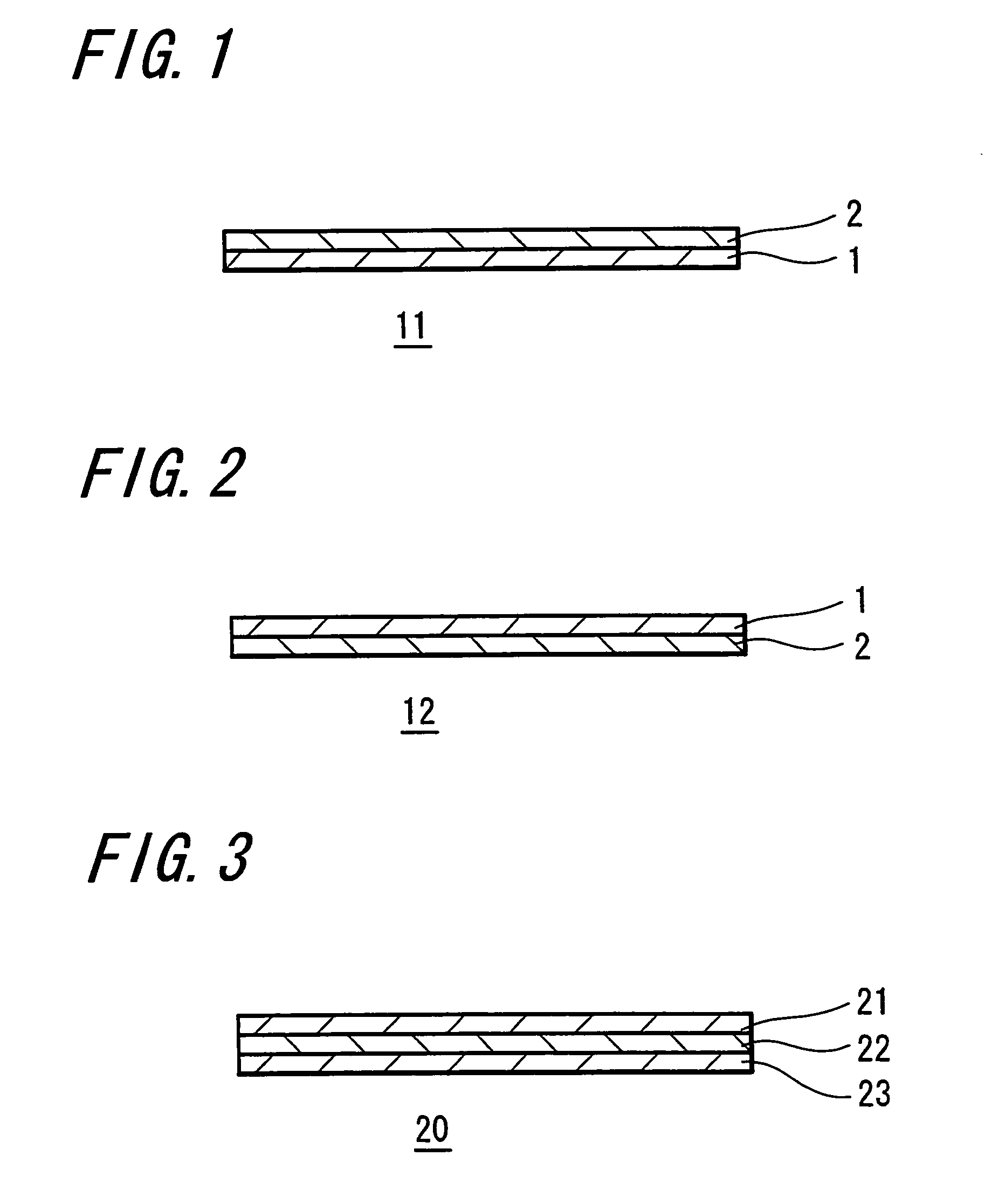Multilayer anisotropic conductive adhesive and connection structure using the same
a technology of anisotropic conductive adhesives and connection structures, applied in the direction of film/foil adhesives without carriers, film/foil adhesives, transportation and packaging, etc., can solve problems such as reflow resistance, and achieve the effect of excellent resistance reflow
- Summary
- Abstract
- Description
- Claims
- Application Information
AI Technical Summary
Benefits of technology
Problems solved by technology
Method used
Image
Examples
example 1
Practice Example 1
[0083] As a first adhesive layer the film 2 of 40 μm in thickness whose DSC exothermic peak temperature is 151° C. was given and as a second adhesive layer the film 5 of 10 μm in thickness whose DSC exothermic peak temperature is 121° C. was given; and a multilayer anisotropic conductive adhesive of two-layer structure was formed by laminating these layers.
[0084] Specifically, after coating liquid of the adhesive layer was applied to a release film to make each of the films (the film 2 and the film 5) for adhesive layers, the two films were stuck on their surfaces opposite to the release films to obtain multilayer anisotropic conductive adhesive approximately 50 μm in thickness.
[0085] The following structure was prepared as a substrate and a chip.
[0086] The substrate used: FR-5 glass epoxy substrate (glass epoxy layer 0.6 mm / Cu pattern 35 μm / surface Ni / Au plating; at a pitch of 150 μm)
[0087] The chip used: 6.3 mm□ in size, 0.4 mm in thickness, and an Au stud bu...
examples 2 to 5
Practice Examples 2 to 5
[0089] Connection structures of Practice Examples 2 to 5 were obtained similarly to Practice Example 1, except that the thickness of first adhesive layer (film 2) and second adhesive layer (film 5) were altered as shown in Table 2, respectively.
example 6
Practice Example 6
[0090] As a first adhesive layer the film 1 of 15 μm in thickness whose DSC exothermic peak temperature is 171° C. was given and as a second adhesive layer the film 5 of 35 μm in thickness was given; and a multilayer anisotropic conductive adhesive of two-layer structure was formed by laminating these layers, and a connection structure of Practice Example 6 was obtained other than that similarly to Practice Example 1.
PUM
| Property | Measurement | Unit |
|---|---|---|
| DSC exothermic peak temperature | aaaaa | aaaaa |
| DSC exothermic peak temperature | aaaaa | aaaaa |
| DSC exothermic peak temperature | aaaaa | aaaaa |
Abstract
Description
Claims
Application Information
 Login to View More
Login to View More - R&D
- Intellectual Property
- Life Sciences
- Materials
- Tech Scout
- Unparalleled Data Quality
- Higher Quality Content
- 60% Fewer Hallucinations
Browse by: Latest US Patents, China's latest patents, Technical Efficacy Thesaurus, Application Domain, Technology Topic, Popular Technical Reports.
© 2025 PatSnap. All rights reserved.Legal|Privacy policy|Modern Slavery Act Transparency Statement|Sitemap|About US| Contact US: help@patsnap.com

